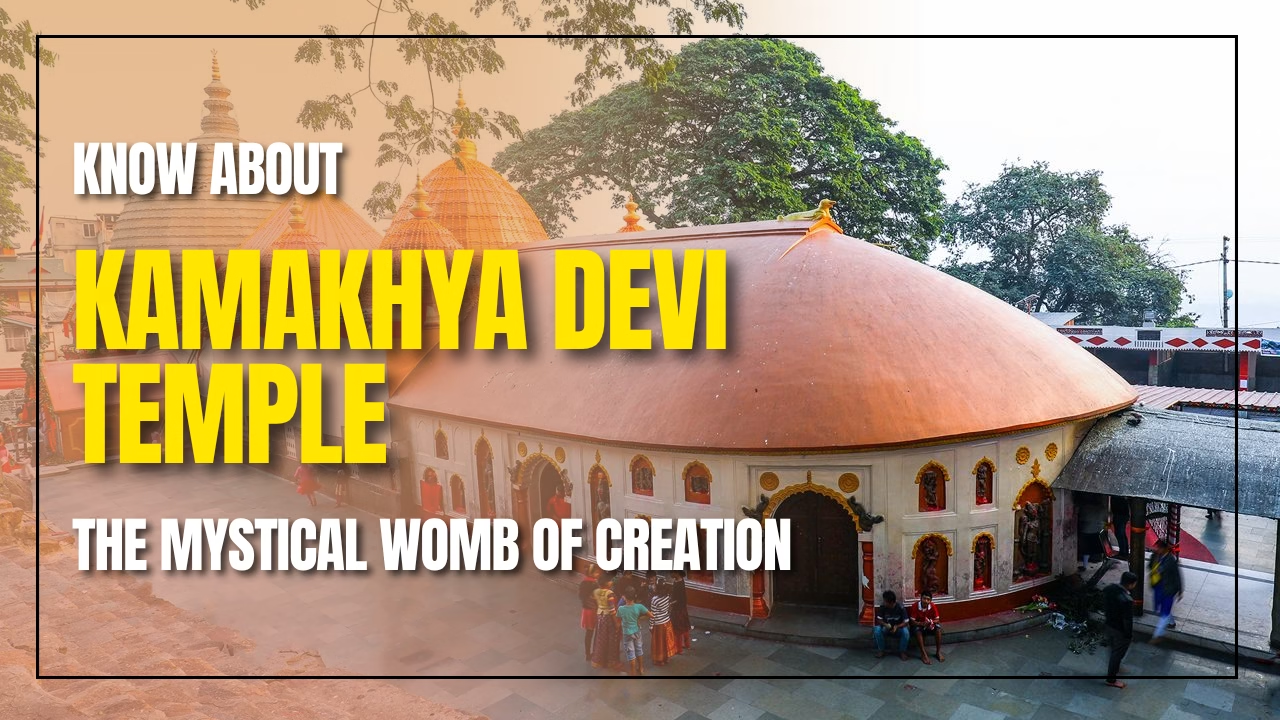“A temple where no idol exists, only a sacred stone bathed in a natural spring — Kamakhya is not just a place of worship, it’s a gateway into the secrets of creation.”
Tucked away on the Nilachal hills of Assam lies a temple unlike any other — one that doesn’t house a statue, but a womb-shaped sanctum, a natural cleft in the rock where a spring flows endlessly. This is the Kamakhya Devi Temple, one of the most enigmatic shrines in India — sacred, primal, and shrouded in mystery.
Recognized as one of the 51 Shakti Peethas, Kamakhya is deeply rooted in the legends of Shakti — the divine feminine energy. Many believe that this is the site where a part of the goddess fell to Earth, making it a highly revered center of spiritual energy.
Unlike most temples that lift your eyes toward towering spires, Kamakhya draws you into the earth, into a natural cave where a spring flows through the yoni-shaped rock. This flowing water isn’t just symbolic. Devotees believe it’s the goddess herself — alive, fertile, and pulsing with energy.
But Kamakhya’s story isn’t limited to architecture or belief. Each year during the Ambubachi Mela, the temple closes for three days — because the goddess is said to be menstruating. The rituals pause. Red cloth replaces offerings. And in a rare, unsettling phenomenon, even the Brahmaputra River nearby turns red, deepening the mystery for believers and skeptics alike.
This temple doesn’t just invite faith. It confronts silence, challenges purity myths, and offers something ancient, earthy, and raw. Kamakhya is not where the sacred hides — it’s where the sacred bleeds.
Table of Contents
Where Faith Meets Flesh – What Makes Kamakhya Unique
Most Hindu temples follow a clear pattern — a sanctum with an idol, a priest conducting rituals, and an architecture that rises toward the sky. Kamakhya breaks all of that. It has no idol at all. Instead, the heart of worship lies in a yoni-shaped rock inside a dark underground cave, where a natural spring flows constantly. Devotees don’t look up — they step down into the earth to pray.
This style of worship goes back to ancient fertility cults that predate mainstream Hinduism. Some scholars believe Kamakhya may have evolved from indigenous tribal practices, especially those of the Khasi and Koch people, who revered feminine earth-energies long before Sanskritic traditions reached the region.
Even the temple’s ritual calendar doesn’t follow standard norms. During Ambubachi, the temple shuts down to mark the menstruation of the goddess. Unlike other temples that exclude women during their periods, Kamakhya pauses all rituals — not out of shame, but to honor that sacred time. This reversal of rules is unmatched in any major temple tradition.
Kamakhya is also the only Shakti Peetha where the focus is not on mythological storytelling but on raw, elemental forces. There’s no Ramayana mural, no grand epic retelling. Worship here is direct, tactile, and often personal. For many visitors, it feels less like a temple and more like standing inside a living symbol of creation.
Know more about the Shakti Peethas – 51 Shakti Peethas of India: Divine Energy, Myth, and Mystery
The Legend of Sati — And Why Only Kamakhya Received the Womb
The story of Kamakhya begins with a fierce love and a tragic fire.
Sati, the first wife of Lord Shiva, was the daughter of King Daksha. But Daksha hated Shiva’s wild, ascetic ways. One day, he organized a grand yagna (sacred ritual) and invited all gods — except Shiva. Sati, hurt by her father’s insult, went to the yagna anyway, hoping to change his mind. But Daksha humiliated her even more.
Unable to bear the shame, Sati jumped into the fire of the yagna and gave up her life.
When Shiva heard of her death, he was filled with unbearable grief and rage. He carried Sati’s burning body across the skies, wandering in sorrow. To calm him, Lord Vishnu used his divine discus to cut her body into pieces. Each piece fell to the earth and became a Shakti Peetha — a sacred spot filled with the energy of the goddess.
There are 51 such sites across India, but Kamakhya stands apart for one reason — it’s believed to be where Sati’s yoni, or womb, fell. While other Peethas hold body parts like hands, eyes, or feet, only Kamakhya carries the symbol of life itself. That’s why the temple doesn’t house a figure or image — it honors the very origin point of creation.
Some versions of the legend suggest that Kamakhya was already a powerful site of local goddess worship before the Puranic story of Sati was layered onto it. In that view, the Shakti Peetha narrative was a way to integrate older, regional spiritual practices into the Hindu mainstream — a reminder that Kamakhya’s roots may run even deeper than the myths suggest.
This intersection of myth and memory makes Kamakhya not just a place of mourning, but one of rebirth and absorption — where pain became power, and a wound became a womb.
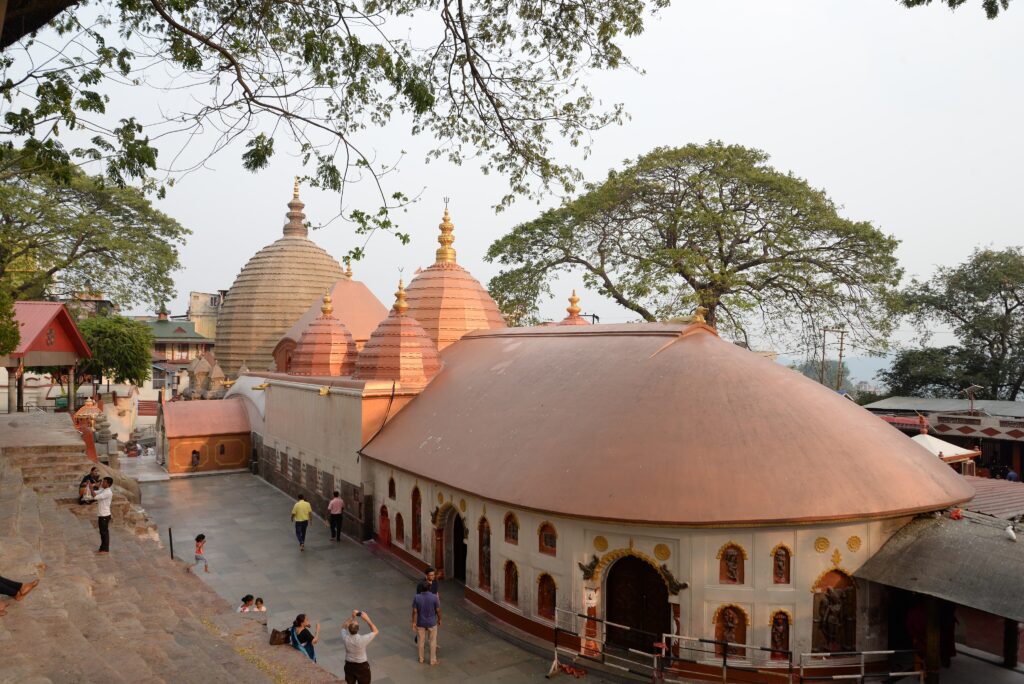
Image Credit: Devkmaravi, CC BY-SA 4.0 via Wikimedia Commons
https://commons.wikimedia.org/wiki/File:Kamakhya_Temple_-_DEV_8829.jpg
Tantra and the Temple – Not Just a Buzzword
When people hear the word “Tantra,” they often think of something secret or misunderstood. But at Kamakhya, Tantra is not hidden — it’s alive, woven into the temple’s rituals and energy.
Kamakhya is considered the epicenter of Tantric worship in India, but Tantra here isn’t about secrecy or scandal. It’s a structured, ancient spiritual path that uses the body, breath, and symbolic rituals to reach the divine — without denying the physical world. Where many temples encourage detachment, Kamakhya’s Tantra teaches acceptance of everything — desire, death, and divinity.
The temple follows Kaula Tantra, a school that believes the divine resides in all matter, especially within the human body. Practitioners come not to escape the body, but to understand and master its hidden energies. At Kamakhya, every offering — from red hibiscus flowers to raw meat during specific rites — is chosen to awaken primal forces, not appease a distant god.
Legends speak of underground chambers within the temple complex, where initiation rituals take place in silence, passed down from guru to disciple. Though access is restricted, these chambers are said to contain sacred yantras and symbolic geometry, linking the temple’s rituals to the cosmic design of the universe.
Even today, during festivals like Ambubachi, Tantric sadhaks gather at Kamakhya to perform intense meditations and night-long sadhanas. Dressed in black or red, often unnoticed by the crowd, they follow paths that are old, rigorous, and rarely spoken of — because Tantra is less about spectacle and more about transformation.
The Temple Bleeds – Ambubachi Mela and Divine Menstruation
Once a year, Kamakhya Temple closes its doors. No prayers, no rituals, no offerings. The reason? The goddess is believed to be menstruating.
This is the Ambubachi Mela, one of the most powerful and unusual festivals in India. For three days, priests seal the inner sanctum. Devotees wait outside. The earth rests, and so does the goddess. It’s not seen as something shameful. Here, menstruation is sacred — a sign of life, fertility, and renewal.
During these days, all temple activities stop. No puja is performed. No prasad is offered. Even the priests do not enter the sanctum. This symbolic rest honors the natural rhythm of the feminine, treating menstruation not as impurity, but as sacred regeneration. The temple becomes a cosmic womb at rest, and the pause is filled with silence, reverence, and anticipation.
Outside the closed gates, tens of thousands of pilgrims wait. But behind the scenes, a different kind of work begins. Women priests, rare in most temple spaces, take on key roles. Devotees receive pieces of red cloth dipped in the temple spring, considered to carry the essence of the menstruating goddess. These cloths are kept as protective charms and healing tokens.
One of the most haunting details appears beyond the temple walls — the Brahmaputra River itself reportedly turns reddish during this time. Locals and pilgrims alike see this as a divine signal: the goddess is in her cycle, and her power spills into the land and water. While geologists explain it as sediment shifts or seasonal algae, believers view it as confirmation from nature herself.
Ambubachi doesn’t just mark a festival. It flips societal shame around menstruation on its head. In a country where periods are often spoken of in whispers, Kamakhya shouts the truth aloud: the power to bleed is the power to create, and it deserves respect, not silence.
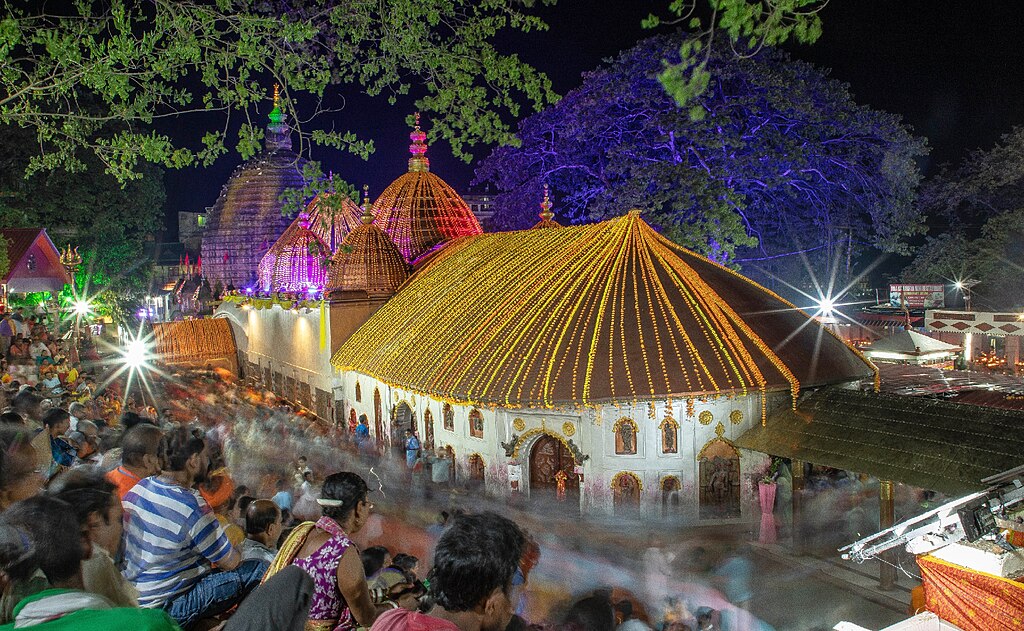
Image Credit: Richard barman, CC BY-SA 4.0 via Wikimedia Commons
https://commons.wikimedia.org/wiki/File:Kamakhya_Temple_by_Richard_Barman.jpg
The Architecture – A Womb-shaped Sanctum
At first glance, Kamakhya Temple doesn’t stand out with size or decoration. Its bulbous dome and curved shikhara follow the Nilachal style, native to Assam. Unlike the straight, towering lines of North Indian temples, Kamakhya’s structure looks more like a lotus in bloom — grounded, organic, and expansive in shape rather than height.
The path to the sanctum is not a walk upward but a descent underground. Visitors pass through narrow, dimly lit stone steps that lead into a cave. The deeper you go, the cooler and darker it becomes. There is no grand doorway or throne room. The goddess waits beneath the surface, inside the earth — just as life begins inside the womb.
The central chamber, known as the Garbhagriha (womb chamber), houses a naturally formed depression in the rock — the sacred yoni — constantly bathed by a trickle of water from an underground spring. There are no idols. No sculpted face. Just the raw presence of stone and flowing water, covered with red hibiscus flowers, vermilion, and silks.
Even the surrounding elements serve a purpose. Red and black stone dominate the structure — colors associated with Shakti and Tantra. The walls feature carvings of Matrikas (mother goddesses), symbolic animals, and serpents, many of which are linked to fertility, time, and transformation. Every corner seems built not just to impress, but to align with cosmic energy.
Architecturally, Kamakhya is not designed to elevate you above the world, but to pull you inward — into your senses, your body, and the deeper, often ignored layers of life. The temple doesn’t point to the sky. It takes you home — to the first silence, the first pulse, the first breath.
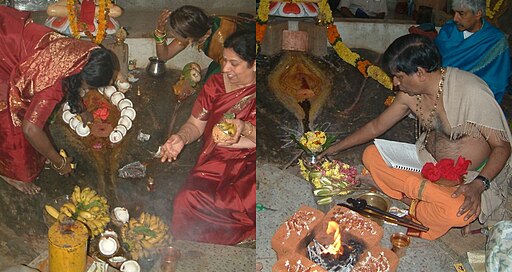
Image Credit: Devi bhakta, Public domain, via Wikimedia Commons
https://commons.wikimedia.org/wiki/File:Kamakhya_aiya.jpg
Kamakhya Through the Ages – Kings, Seekers & Sadhaks
Kamakhya’s roots may stretch into pre-Vedic times, but the temple we see today is a survivor of destruction, revival, and quiet revolution. In the 7th century CE, the Chinese traveler Xuanzang (Hiuen Tsang) recorded hearing of a temple in Assam where locals worshipped a goddess of fertility. Though he never named Kamakhya, many believe he referred to this sacred hill — already known then for its unconventional rituals.
By the 16th century, the original temple had fallen into ruin. It was King Naranarayana of the Koch dynasty who rebuilt it, with his brother Chilarai, a general and devout Shakta follower, overseeing the restoration. The Koch kings didn’t just repair the temple — they helped shape it into a center of political power and Tantric scholarship. Under their patronage, the temple became a bridge between tribal worship and classical Hinduism.
Later, the Ahom rulers, who initially followed Tai animist beliefs, recognized Kamakhya’s influence and offered protection. Though they didn’t always align with Tantric practices, they saw the strategic and spiritual value of keeping the goddess on their side. Some Ahom kings even donated land and resources, treating Kamakhya as a guardian deity of the kingdom.
Spiritual seekers also left their mark. Krishnananda Agamavagisha, the Tantric scholar credited with codifying many rituals performed at Kamakhya, is believed to have practiced here in the 16th century. The temple also drew reformers and monks — including Swami Vivekananda, who visited in the late 1800s. According to some accounts, he spent hours in silent meditation inside the sanctum, absorbing its raw energy.
Under British rule, Kamakhya was misunderstood and dismissed as primitive. Colonial records described it as “uncivilized,” failing to grasp its symbolism or depth. Yet, even during that time, pilgrims kept coming, rituals continued, and the goddess remained unmoved by politics or prejudice.
What has kept Kamakhya alive is not just royal support or religious fame, but the quiet, unshaken devotion of those who return — year after year — to touch the stone, feel the spring, and remember where all life begins.
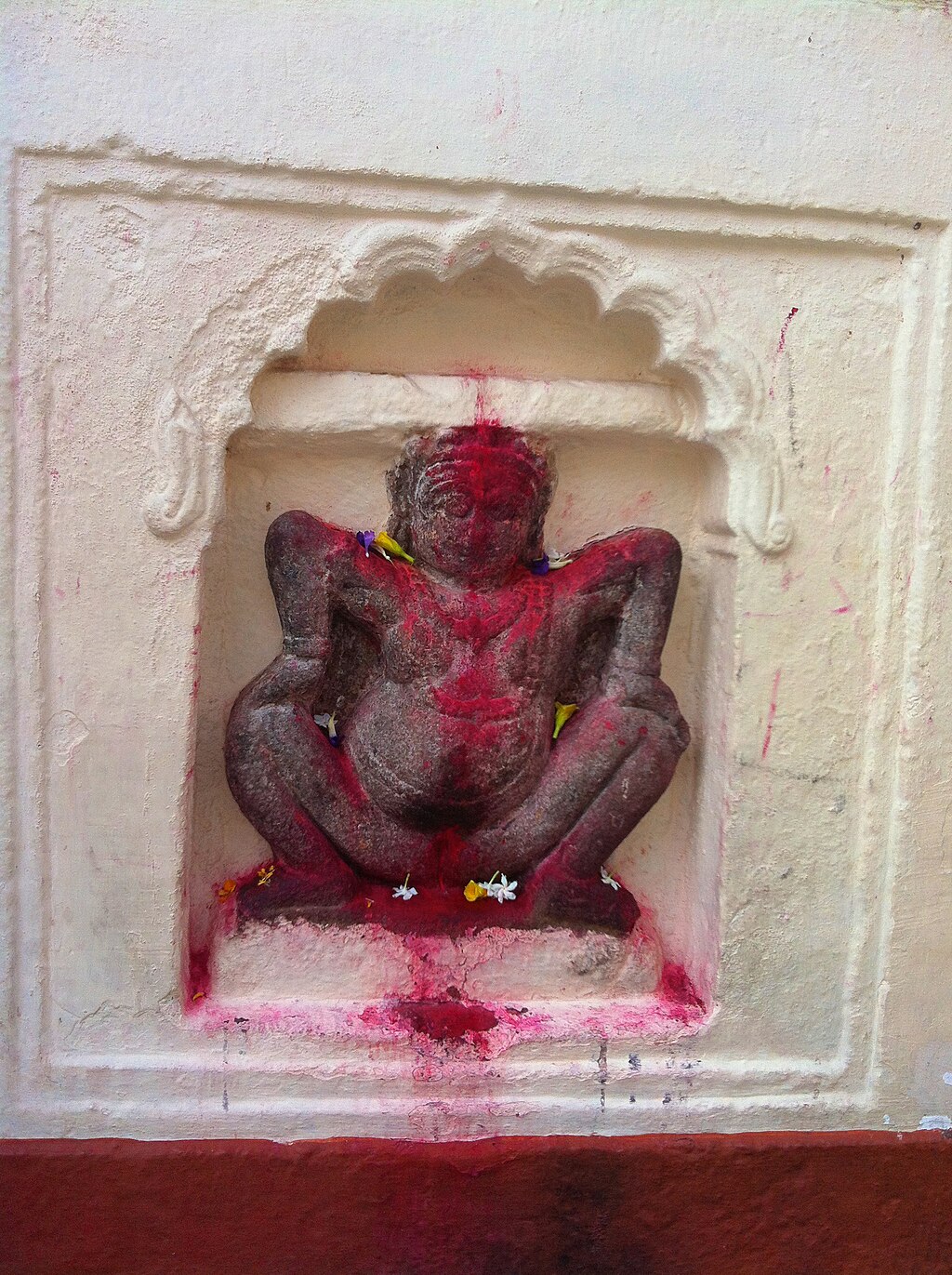
Image Credit: Subhashish Panigrahi, CC BY-SA 3.0 via Wikimedia Commons
https://commons.wikimedia.org/wiki/File:Idol_at_Kamakhya_temple,_Guwahati,_Assam_02.jpg
The Feminine Divine Beyond Gender
At Kamakhya, the goddess is not just a woman. She is Shakti — the power behind all creation. She is the seed, the soil, the womb, and the breath that makes the universe alive.
Shakti isn’t seen as a helper or companion to a male god. She is the source — the reason anything exists. In Tantra, this force is not separate from the body. Instead, the body itself becomes a tool for worship, with cycles, fluids, breath, and blood all treated as pathways to truth. Kamakhya puts this philosophy into physical space: the cave is the womb; the water is the flow of life.
While most temples speak of purity in terms of separation — light from dark, male from female, spirit from flesh — Kamakhya dissolves those boundaries. Here, menstruation isn’t hidden. Creation isn’t clean. The sacred isn’t above you — it’s inside your very cells.
Interestingly, the idea of a womb-shaped shrine isn’t unique to India. In ancient Egypt, the goddess Isis was worshipped in subterranean chambers symbolizing the fertile Earth. In Greece, the Oracle of Delphi sat over a cleft in the ground, believed to be the Earth’s navel. Kamakhya joins this global thread, yet remains radically its own — where the body is not a metaphor but the very stage of the divine.
To stand inside Kamakhya is to question everything you’ve been taught about god, gender, and holiness. The goddess here does not smile down from a throne. She waits in the dark, asks nothing, and gives everything — as all mothers do.
Modern Curiosity and Cultural Disconnect
Today, Kamakhya attracts millions — from pilgrims to Instagram influencers. The temple courtyard buzzes with clicking cameras, buzzing drones, and souvenir stalls. For many, the trip is about checking a box, not entering a mystery. They see the walls, the crowd, the rituals — but miss the silence beneath it all.
Guides often reduce the temple to headlines: “The place where the goddess bleeds,” “India’s menstruating shrine.” But this narrow view flattens the temple’s meaning. Ambubachi becomes a spectacle. The red cloth becomes a token. And the womb becomes a tourist curiosity, rather than a living symbol of cosmic power.
The temple complex itself has begun to reflect this shift. Loudspeakers compete with chants. Vendors call out beside the stone steps. During peak season, many visitors walk past the underground sanctum without understanding what it holds — or why it asks you to descend in silence, not rush through with your phone out.
Some locals and priests express quiet concern. They see the rituals growing shorter, faster, more mechanical — done for the crowd, not the goddess. The deeper Tantric practices are now mostly hidden or performed elsewhere, as the temple’s energy bends to modern expectations.
Yet even through all this, something holds. Pilgrims still return with tears in their eyes. Children still bow before the spring. And a few, just a few, leave their questions at the entrance, step into the dark, and feel something stir inside them — something ancient, wordless, and real.
Conclusion – A Portal to the Primal
Kamakhya is not just a temple you visit. It’s a place you enter with your whole being.
You don’t climb towards heaven here. You descend — into the earth, into a womb, into the very origin of life. There are no grand statues, no glittering halls. Just a dark, sacred space that holds the pulse of creation.
This is not a place of simple answers. It’s a place of deep feeling, raw energy, and silent truths. Kamakhya doesn’t tell you what to believe. She invites you to remember what you’ve always known — that the divine is not above you or outside you. It is within you, flowing like the spring beneath her cave.
In a world that often forgets the sacred in the body, in cycles, and in the earth — Kamakhya stands firm, ancient and alive.
She doesn’t shout.
She whispers.
And if you listen closely, you might just hear your own soul answering back.
Know more about the Sacred Places of Bharat
FAQs – Frequently Asked Questions
What makes Kamakhya Temple different from other temples in India?
Unlike most temples that worship a deity in the form of an idol, Kamakhya worships the goddess through a natural stone yoni inside a cave, representing the creative feminine force.
Why does Kamakhya Temple close during the Ambubachi Mela?
The temple shuts for three days every year to honor the goddess’s menstruation, treating it as a sacred time of rest and regeneration rather than impurity.
Does the Brahmaputra River really turn red during Ambubachi?
Yes, locals report a reddish tint in the river during the festival. While scientists attribute it to natural sediment or algae, devotees see it as a divine sign.
Is Kamakhya associated with Tantra?
Yes. Kamakhya is the epicenter of Tantric practice in India. The temple’s rituals reflect Kaula Tantra traditions, where the body and earth are seen as sacred pathways to the divine.
Can anyone visit Kamakhya Temple?
Yes, the temple is open to all, though access to the inner sanctum may be restricted during peak festival days. Ambubachi draws massive crowds, so planning ahead is wise.
